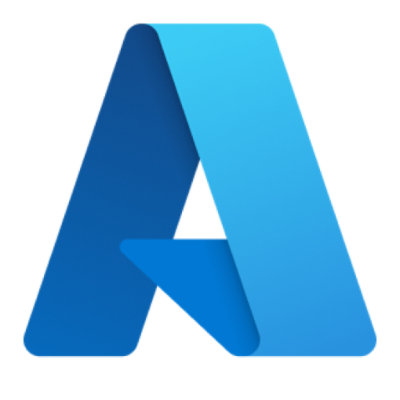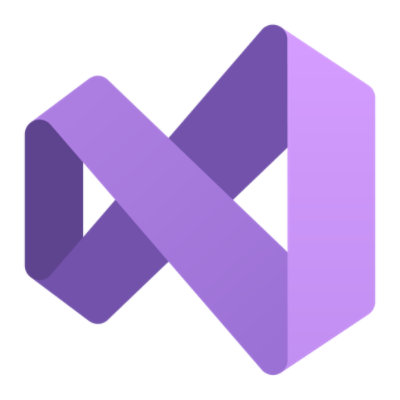National Railway Company of Belgium (SNCB) carries 253.4 million passengers a year and strives to provide safe, punctual service to all of them. To enhance the travel experience and address the impending opening of the market to competition, SNCB has adopted a cloud-first strategy for IT and chosen Microsoft Azure as its trusted platform. The company is moving the majority of its 750 applications to Azure and developing new, cloud-based services that provide passengers with more accurate information and make work easier and more efficient for employees.


“We appreciate the flexibility, stability, and ease of use of Azure and the synergy it has with Microsoft 365.”
Guido Lemeire, Chief Information Officer, National Railway Company of Belgium
From clouds of steam to a cloud of data
Since 1926, National Railway Company of Belgium (SNCB) has been transporting citizens and visitors throughout the country. SNCB operates 3,672 passenger trains daily, serving 554 stations, with an annual ridership of 253.4 million passengers.
Over the course of its nearly 100 years in existence, SNCB has transformed itself in response to major technological revolutions in rail transport—from steam power to coal, then to diesel and now electricity. SNCB wants to bring that revolutionary spirit to IT, as well, by moving applications and other resources to the cloud and introducing digital tools to modernize day-to-day operations.
“As a company, we’ve adopted a cloud-first strategy,” says Tim Groenwals, Chief Information Security Officer at National Railway Company of Belgium. “We start every new business IT project by asking whether a cloud solution is available. If not, we develop it ourselves in the cloud. We’re also migrating as many existing applications as possible from on-premises datacenters to the cloud.”
SNCB has chosen Microsoft Azure as its trusted cloud platform, and the company has deployed cloud-based Microsoft 365 productivity, communication, and collaboration products across the organization. Working with Microsoft and Tata Consultancy Services (TCS), a member of the Microsoft Partner Network, SNCB is using its move to Azure to improve operations, enhance safety, and provide better service for the hundreds of thousands of people who rely on its trains every day.
The right cloud for a changing industry
Government-owned SNCB is currently the sole passenger rail operator within Belgium, but that will change in 2023 when the market opens up to competition. Freight and international rail are already competitive industries in Belgium. So, SNCB is looking ahead to a time when efficiency, agility, and an innovative company culture will be important assets.
“When you have no competition, it’s possible to fall into a comfort zone where you don’t feel the need to innovate,” says Groenwals. “But we need to be ready for 2023, when we’ll face competition not just from other rail companies, but from technology companies that might offer products that compete with our trip planner or our ticket sales.”
Adopting a cloud-first mindset for IT is an important step toward addressing the coming changes. When it came time to choose a cloud provider, SNCB thoroughly investigated all the market leaders and found Azure to be the best fit for its needs. “We appreciate the flexibility, stability, and ease of use of Azure and the synergy it has with Microsoft 365,” says Guido Lemeire, Chief Information Officer at National Railway Company of Belgium. “We also value our relationship with Microsoft, and we trust in the high quality of Microsoft products and support.”
SNCB created an innovation board to find ways to increase customer satisfaction, deliver new business products and services, and boost security. And the move to Azure has brought new speed and agility to the initiative. Ideas, insights, and feedback come to the board from its members, TCS, and Microsoft, and members quickly turn those ideas into proof of concept (POC) deployments.
“We have a process in place that lets us turn an idea into a POC in just five working days,” explains Groenwals. “We can very rapidly create an environment in Azure, do some testing and linking to back-end systems to show that it can work, and start getting results right away.”
A highly secure cloud for a prominent public company
SNCB appreciates the high level of security and the compliance with the European Union’s General Data Protection Regulation (GDPR) requirements that Azure provides. “We could never invest as much time, money, and expertise in security and compliance as Microsoft puts into Azure,” says Groenwals. “I know that Microsoft will do its very best to protect our investment, 24 hours a day.”
As a highly visible public entity, SNCB draws near-constant attacks from hackers, so being able to trust the level of security in Azure is a tremendous asset for the company. In addition to relying on built-in security features, SNCB uses Azure Security Center to address the threats and risks that the company faces and monitor its global security posture. The company also takes advantage of its cloud platform’s scalability when faced with well-orchestrated distributed denial of service (DDOS) attacks on its website.
“Thanks to Azure, we just increase our computing capacity and the cloud absorbs the DDOS traffic, with no website downtime,” says Lemeire. “We used to design for full resilience and provision extensive physical infrastructure to be able to cope with incidents like that, and even then, it wasn’t always enough.”
Better information for passengers
In the past, SNCB customers expressed dissatisfaction with the inconsistency of information about trains and schedules across different channels. “This occurred because data came from seven different systems that did not communicate easily with each other,” says Lemeire.
To remedy this problem, SNCB created the Reizigers Info Voyageurs (RIV) solution, which consolidates those seven different back-end systems into a single, integrated system running in Azure. The scalability that Azure provides is important because the railway business has significant usage peaks at certain times of day and during certain periods of the year.
“Because of its scalability, we chose Azure as the only acceptable location for a solution like this,” says Groenwals. “Plus, developing in Azure gives us a level of stability that we didn’t have in our own datacenters. And from the cloud, we can connect easily to the various systems through APIs and web service gateways to get the information we need. Firewall rules made that difficult to do on-premises.”
Now in production, the RIV solution has been delivering on its promise of better information for passengers. “Whether they’re in the station viewing a screen, at home on the web, or in a taxi looking at their phone, our customers now all see the same information about every train in service,” says Groenwals. “The response time is great, and we can scale up and down as needed. Azure seemed like the logical choice for RIV, and it has proven to be the right choice.”
Better information for staff members
SNCB customers aren’t the only ones benefitting from faster access to more accurate data. For train drivers, conductors, and maintenance crews, the company’s digital transformation brings new, more efficient ways of working.
The railway business has traditionally been very paper intensive, with policies and procedures, safety notices, daily route schedules, and maintenance forms all taking up valuable space in the work lives of its employees. For SNCB train drivers, the daily load of paper-based materials was an actual weight on their shoulders—they spent the day carrying a 12-kilogram (26-pound) backpack full of documents.
“The paper-based way of working had its origins in procedures dating back to the 1930s,” explains Jan-Pieter Van Impe, IT Project Lead eDrive at National Railway Company of Belgium. “SNCB spent several years on a digitization project called Intelligent Driver Assistance. Each driver got a tablet that served as a PDF reader for the rulebook, but it wasn’t an ideal solution.”
Kevin Vermeylen, Digital Customer Care Agent and former SNCB train driver, adds, “The tablets were huge, and whenever the documentation changed, the system pushed the changes out to us and we had to synchronize our devices. This took up to 20 valuable minutes at the beginning of every service before we could even start reading the updates. It was easier than the paper system, but it cost too much time.”
So, SNCB created a new system called eDrive that runs in Azure and both replaces and enhances the functionality of the prior solution. “We now have a simple, lightweight tablet with access to all the documents in the cloud,” says Vermeylen. “At the beginning of each shift, we can easily identify the high-priority messages and updates we need to read. This has cut the pre-shift preparation time down to about five minutes, a 75 percent improvement.”
eDrive makes extensive use of Azure services, including Azure Cosmos DB, which stores all the data about schedules, routes, and inventory. SNCB developers have found that they can easily develop for Azure using powerful resources like Azure DevOps and Microsoft Visual Studio. “We consider Visual Studio a wonderful environment that offers a wide variety of functionality for developers, and the interoperability with Azure brings tremendous value,” says Van Impe. “With a small team, we can do everything necessary to roll out at least one major release every quarter, and we don’t need to worry about things like backups because Azure takes care of that. If we need to upscale our computing capacity temporarily, we can do it with a single click—previously we had to wait a couple of days.”
Digitization-driven enhancements to everyday processes
eDrive offers more than just a convenient e-reader. It digitizes a number of processes that SNCB previously conducted on paper or over the phone. For example, if a driver’s task list for the day gets changed, the system delivers that information directly via the tablet, improving follow-up between drivers and dispatch and enhancing service continuity of the trains. Drivers can also use the tablet to consult a variety of reports and view their work schedules 11 days in advance—information that used to be on a whiteboard at the train depot. SNCB business stakeholders collaborated with developers and created dashboards in Microsoft Power BI, which upper management can use to track operations and performance.
By creating eDrive and deemphasizing paper processes in day-to-day train operations, SNCB now saves nearly 900 pounds of paper every month—the equivalent of 18 trees a year. And this environmentally friendly solution has also proven to be a welcome replacement for paper-based transactions while COVID-19 is a concern. The switch from paper to electronic documents means fewer physical items change hands, reducing the risk of virus transmission.
In addition to eDrive, SNCB has a project called Linda. Based on a similar set of Azure technologies, Linda is designed to simplify and expedite the processes involved when it is time for a train to leave the station. Before a train can depart, the driver and conductor need to ensure that everything is safe and that all doors are closed. The current mechanisms for facilitating this communication vary from station to station, and in some cases, it’s still done with hand signals and whistles.
“With Linda, there is no difference between stations—it’s all done with the same system,” explains Vermeylen. “The conductor uses a smartphone and smartwatch to coordinate with the driver and the signal box—first to indicate that departure is imminent and then to signal that the train is ready and it’s time to go. I think it’s a very elegant way of unifying the different procedures we currently have.”
When the conductor makes the first swipe to indicate imminent departure, that information is also relayed to the information screens across the station, so everyone knows that the train is about to depart and passengers can no longer enter. All this automation leaves SNCB employees with more time to focus on their primary goal: safety.
Change management for digital transformation
SNCB has been through a lot of technological changes in the past few years—some complete, some ongoing, and some still on the horizon. One ongoing project is migrating the majority of the company’s 750 applications to the cloud, using a combined lift-and-shift and refactoring approach. SNCB has already migrated more than 95 percent of the applications, and only a few complicated legacy applications will remain on-premises once SNCB has completed the project.
Before starting projects like eDrive and Linda, SNCB IT staff spent a lot of time talking with train employees to learn which processes worked well and which didn’t. After this, SNCB continued an intense and open collaboration between business and IT that resulted in a first release within 6 months, including onboarding all developers, creating designs, conducting architectural reviews, and addressing GDPR compliance. The initial eDrive deployment focused on delivering digital security messages, regulations, and technical manuals, because prior mechanisms for those notices were a pain point for drivers. Further releases came over a period of 16 months. SNCB gradually added more and more functionality to avoid overwhelming employees with too many changes at one time, and drivers still had the option of using paper as a backup. With the last stage, the company finally retired paper completely, leaving everything digitized.
“Change management needs to go at an appropriate speed and rhythm,” explains Lemeire. “Go too fast, and the organization exceeds its ability to absorb new things. When you hit just the right pace, employees can adapt to new ways of working and gain the best possible benefits from investments in Azure and Microsoft 365. Without those technologies, none of this would have been possible.”
Looking to the future, SNCB has begun investigating the possibilities that AI and machine learning offer for gaining new insights from the company’s vast stores of data about trains, routes, and schedules. “AI and machine learning are high on my agenda in terms of both strategy and innovation,” says Groenwals. “We already have two AI POC projects in the works using Azure technologies, and I think they offer the potential to bring us even more value and benefits.”
Find out more about SNCB on Twitter (French, Dutch), Facebook (French, Dutch), YouTube (French, Dutch), and LinkedIn.
“The response time is great, and we can scale up and down as needed. Azure seemed like the logical choice … and it has proven to be the right choice.”
Tim Groenwals, Chief Information Security Officer, National Railway Company of Belgium
Explore related stories
Fuel innovation with Microsoft

Talk to an expert about custom solutions









Follow Microsoft